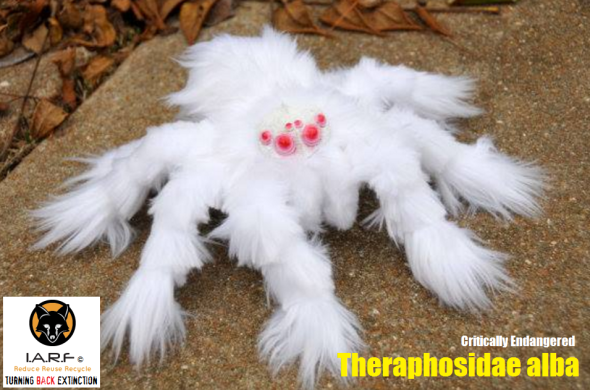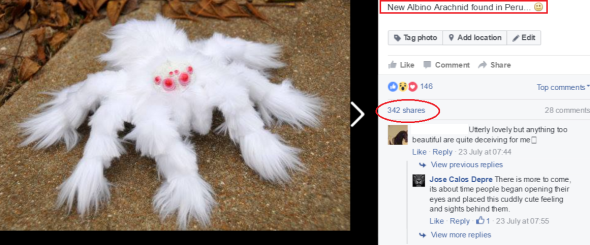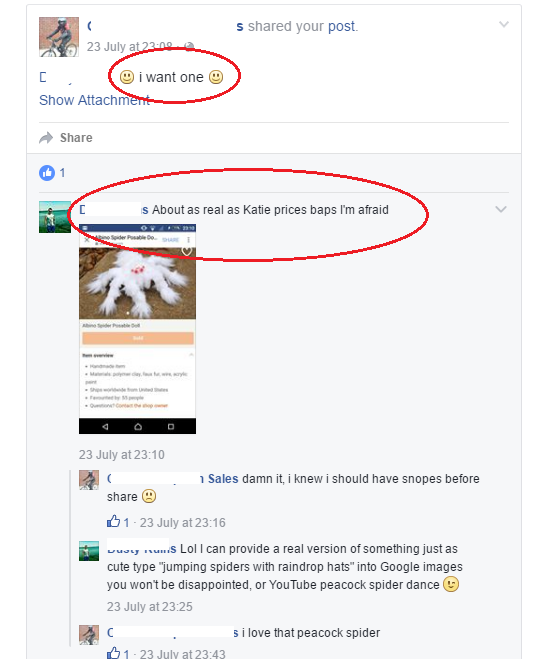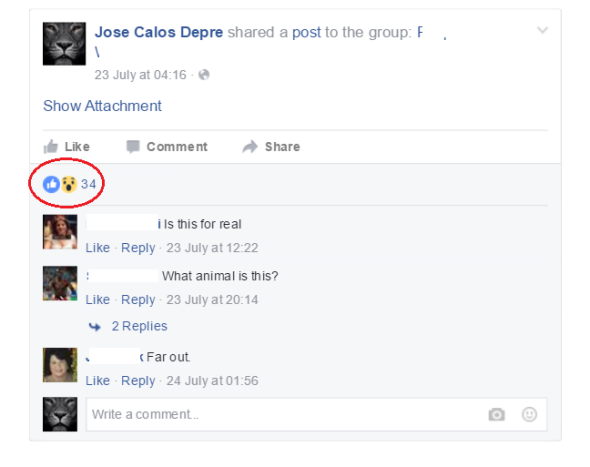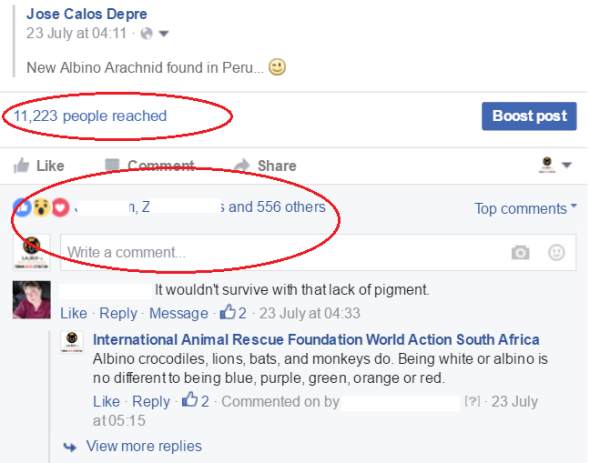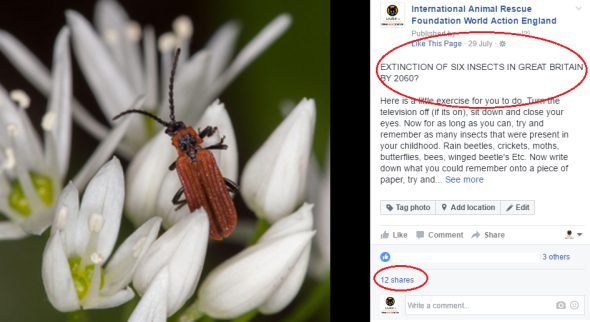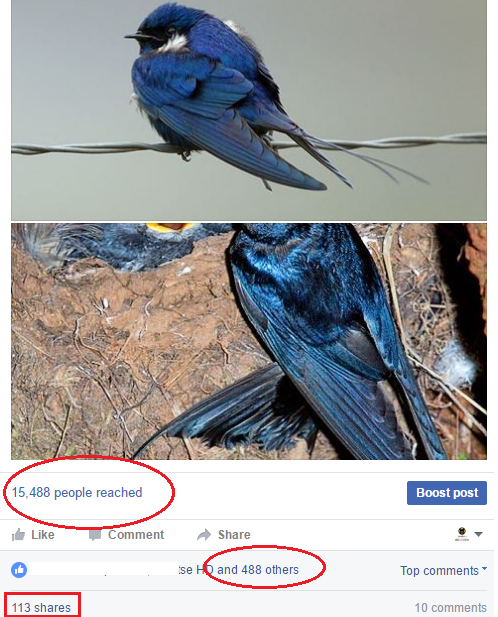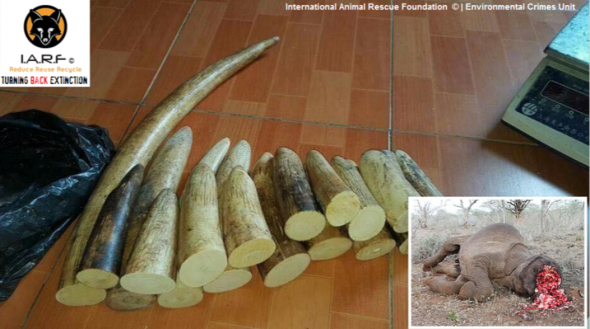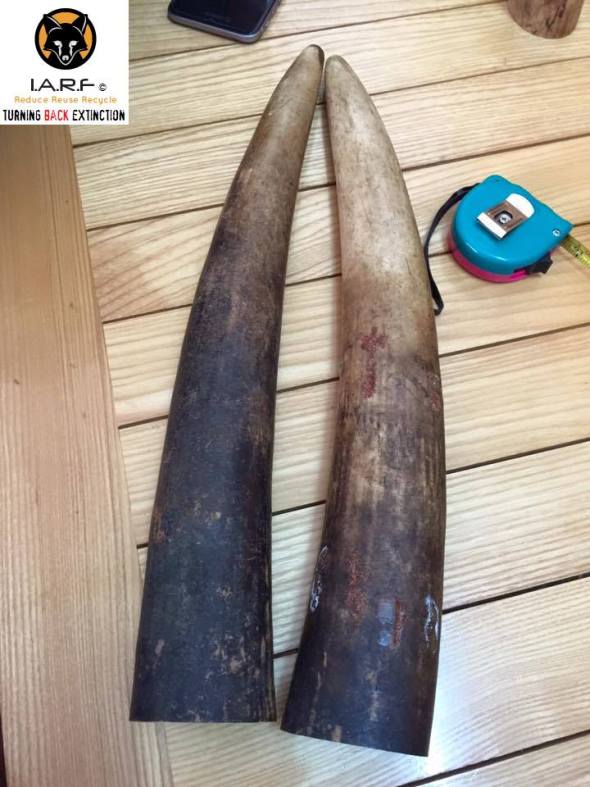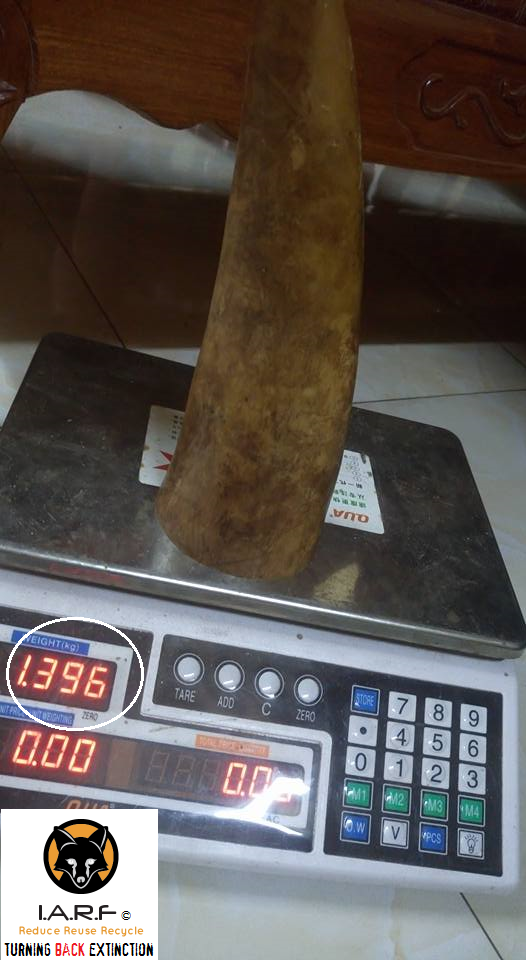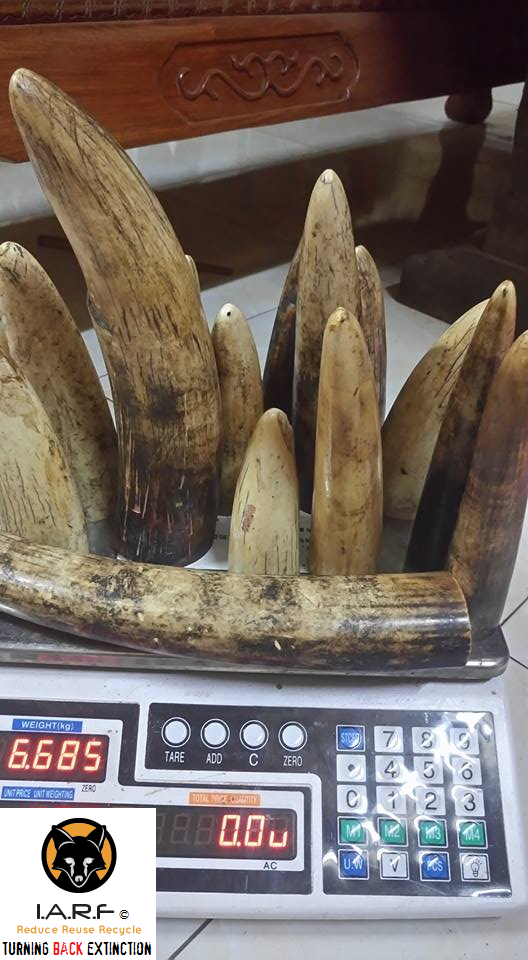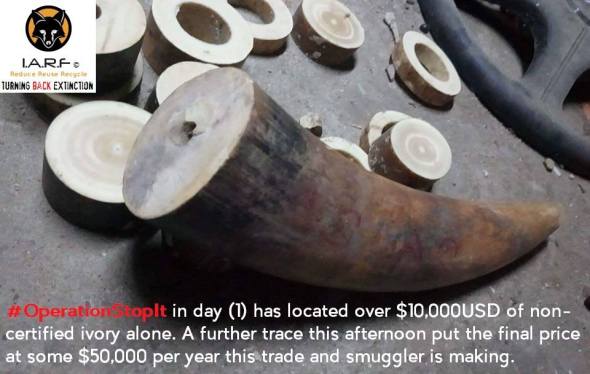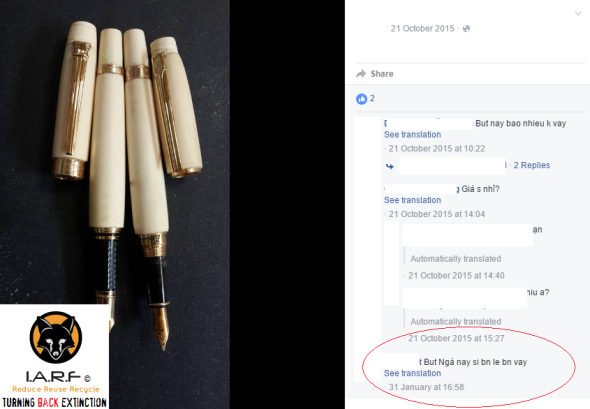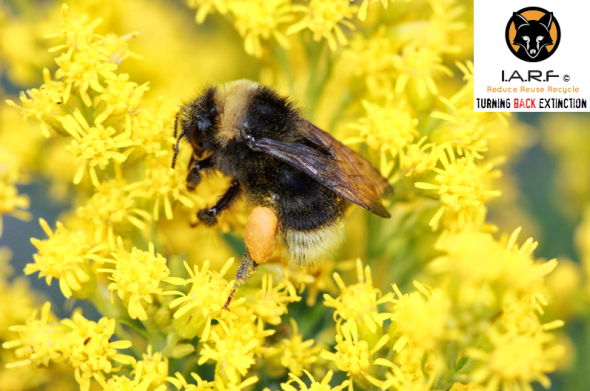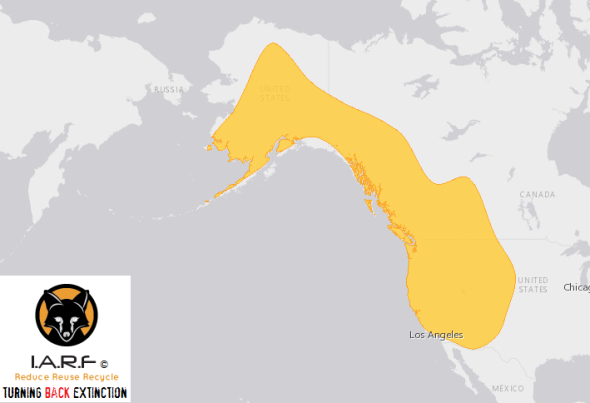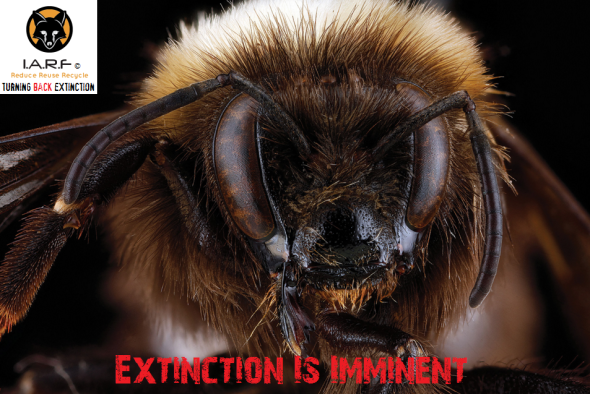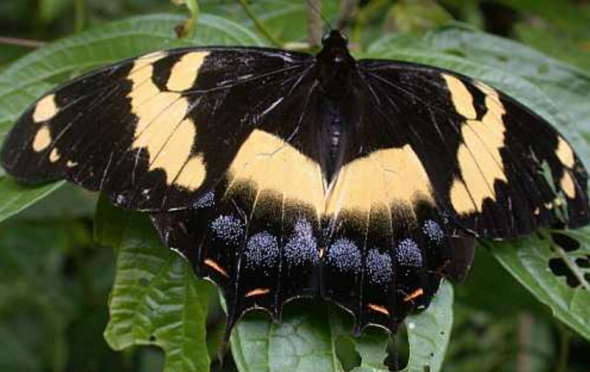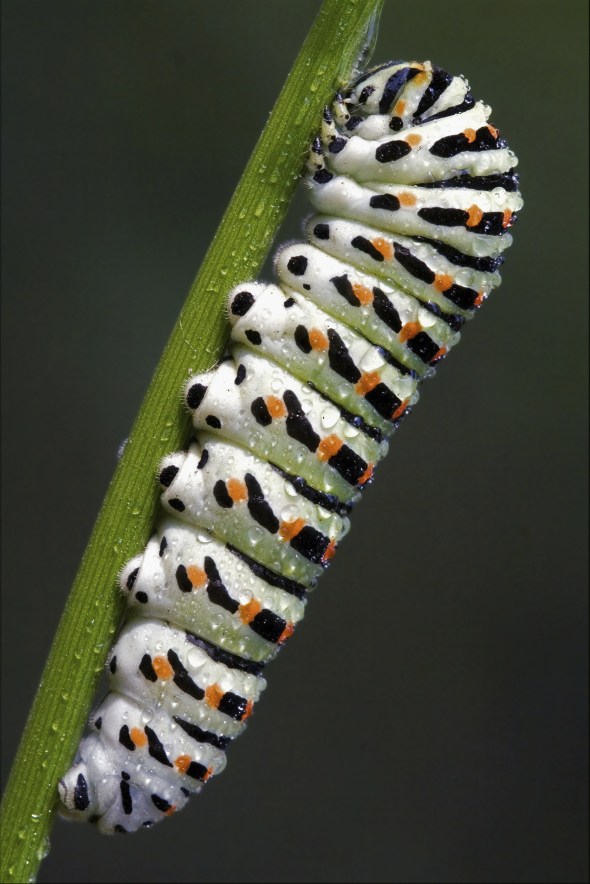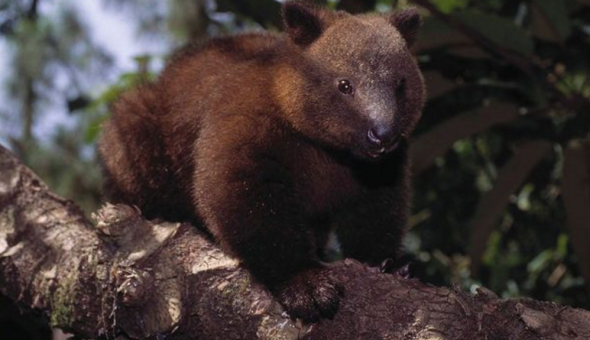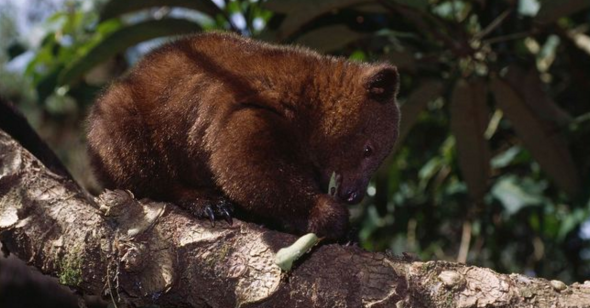ENDANGERED SPECIES MONDAY | PHOCARCTOS HOOKERI EXTINCTION LOOMING - NATIONAL EMERGENCY.
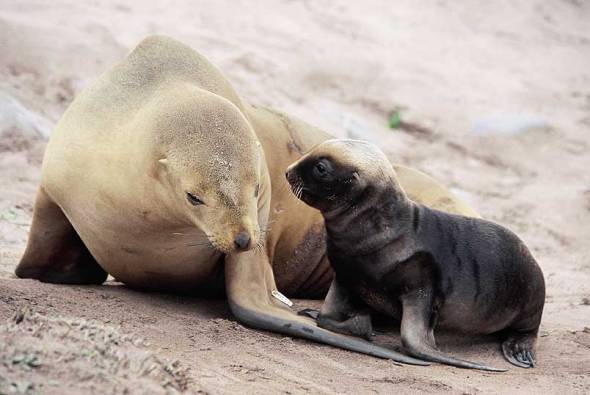
ENDANGERED SPECIES MONDAY | PHOCARCTOS HOOKERI
This Monday’s endangered species (E.S.P.) article I’ve chosen to document on the New Zealand sea lion. Image: New Zealand Sea Lion. Credits: Tui De Roy.
Listed as (endangered) the species was identified by Dr Gray back in 1866. Dr Gray John Edward Gray, FRS (12 February 1800 – 7 March 1875) was a British zoologist. He was the elder brother of zoologist Dr George Robert Gray and son of the pharmacologist and botanist Dr Samuel Frederick Gray (1766–1828).
Dr Gray was Keeper of Zoology at the British Museum in London from 1840 until Christmas 1874, before the Natural History holdings were split off to the Natural History Museum published several catalogues of the museum collections that included comprehensive discussions of animal groups as well as descriptions of new species. He improved the zoological collections to make them amongst the best in the world.
Scientifically identified as the Phocarctos hookeri the species was listed as vulnerable from 1994-2008. Unfortunately due to continued population declines the New Zealand seal is now bordering complete extinction within the wild (and things really aren’t looking good neither) Endemic to Australia (Macquarie Is.); and New Zealand (South Is.), the species is also native to the Pacific North West.
To date there is estimated to be no fewer than 3,031 mature individuals remaining within the wild. New Zealand sea lions are one of the largest New Zealand animals. Like all otariids, they have marked sexual dimorphism; adult males are 240–350 cm long and weigh 320–450 kg and adult females are 180–200 cm long aMnd weigh 90–165 kg. At birth, pups are 70–100 cm long and weigh 7–8 kg; the natal pelage is a thick coat of dark brown hair that becomes dark gray with cream markings on the top of the head, nose, tail and at the base of the flippers.
Adult females’ coats vary from buff to creamy grey with darker pigmentation around the muzzle and the flippers. Adult males are blackish-brown with a well-developed black mane of coarse hair reaching the shoulders. New Zealand sea lions are strongly philopatric.
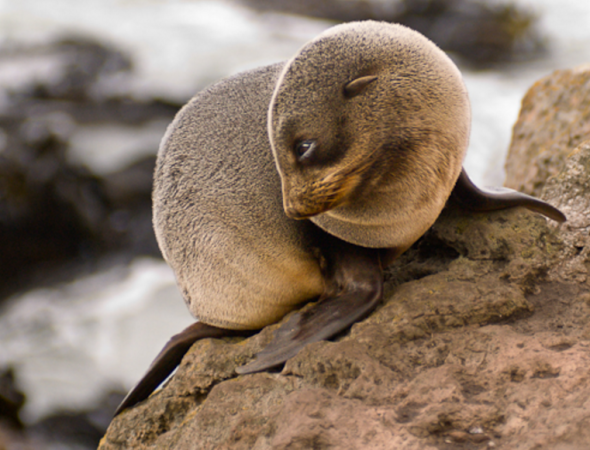
Image: New Zealand Sea Lion Pup. Credits: NZ Fur Seals.
Back in 2012 populations of New Zealand sea lions “were estimated to be standing at a population count of 12,000 mature individuals”. However since that count took place, from (2014) populations have ‘allegedly plummeted’ to all new levels although there doesn’t appear to be any evidence as to why the species suddenly declined - fish trawling and disease have been noted though!.
Like the Maui’s dolphin, the sea lion has come under intense scrutiny this year after research showed its numbers had halved since 1998. It has been classed as nationally critical and if its decline is not stemmed will be extinct within 23 years. A bacterial infection severely reduced breeding in 1997-98, and the species has failed to recover.
Its decline has been compounded by deaths due to squid fisheries, which trawl at a similar depth to the sea lions’ hunting grounds. Conservation groups call the population decline “a national emergency and are calling on stricter by-catch limits and a change in fishing methods”.
BACK IN 2012 THE NEW ZEALAND HERALD REPORTED THE FOLLOWING
In a country with 2800 threatened species, conservation in New Zealand is often about picking winners. The Department of Conservation’s budget and energy can extend only to active interventions for 200 of these endangered species.
Whether a species is protected depends on funding, community input, national identity and research. DoC spokesman Rory Newsam says interventions are often made because the department believes it can “get the most bang for its buck”. But animals and plants are not always invested in because they have a greater chance of survival.
The kakapo receives a relatively large chunk of funding despite being functionally extinct on the mainland. Some ecologists argue too much is spent rescuing the rare parrot, while more crucial parts of our ecosystem are left behind. But the kakapo is protected because it is a charismatic species and the public considers it integral to New Zealand’s ecological identity.
Conservationists say kakapo are a window to New Zealand’s history. They are believed to have inhabited the Earth for millions of years. To kill them off in a fraction of that time is an indictment on the way we live.

Image: New Zealand Sea Lion. Image Credits One Newz.
New Zealand sea lions are known to predate on a wide range of prey species including fish (e.g. hoki and red cod), cephalopods (e.g. New Zealand arrow squid and yellow octopus), crustaceans, seabirds and other marine mammals. Studies indicate a strong location effect on diet, with almost no overlap in prey species comparing sea lions at Otago Peninsula and Campbell Island, at the north and south extents of the species’ breeding range. New Zealand sea lions are in turn predated on by great white sharks, with 27% showing evidence of scarring from near-miss shark attacks in an opportunistic study of adult NZ sea lions at Sandy Bay, Enderby Island.
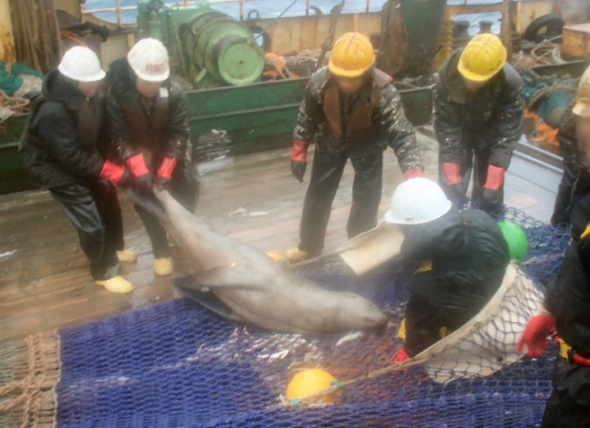
Image: Dead New Zealand Sea Lion in Fishing Net.
Since 2012 New Zealand conservationists, and the public community have been calling on the New Zealand government to do everything they possibly can to preserve this species. Unfortunately as you can see above fishermen are still accidentally killing the species off. As the species is protected under law and listed as endangered, the New Zealand government must take action against these perpetrators, otherwise extinction will most certainly occur.
The Maori people of New Zealand have traditionally hunted Sea Lions, presumably since first contact, as did Europeans upon their arrival much later. Commercial sealing in the early 19th century decimated the population in the Auckland Islands, but despite the depletion sealing continued until the mid-20th century when it was halted.
Commercial sealing in the early 19th century decimated the New Zealand Sea Lion population in the Auckland Islands, but despite the depletion sealing continued until the mid-20th century. The population has yet to fully recover from the period of over exploitation. At the present time, New Zealand Sea Lions have a highly restricted distribution, a small population, and nearly all of the breeding activity is concentrated in two subantarctic island groups. This restricted and small breeding population in combination makes them vulnerable to disease outbreaks, environmental change, and human activities.
The commercial Arrow Squid trawl fishery near the Auckland Islands reported their first New Zealand Sea Lion bycatch mortalities in 1978. Reported or estimated mortality between 1995 and 2007 averaged 92 animals annually (range 17-143) which was 3.7% of the estimated number of mature individuals in the Auckland Island area. Of particular concern is that most bycatch animals are females (up to 91%). New Zealand Sea Lions are also incidentally caught in other trawl fisheries around the Auckland and Campbell Islands.
Apart from direct mortality, competition and habitat modification caused by fishing activity may also be impacting New Zealand Sea Lion foraging areas. Epizootic outbreaks at the Auckland Islands in 1998, 2002, and 2003 led to more than 50%, 33%, and 21% early pup mortality respectively, and were also responsible for the deaths of some animals from other age classes during 1998.
The source of the suspected bacterial agent and cause of the outbreak and subsequent mortality for the 1998 outbreak are unknown, however the 2002 and 2003 outbreaks have been identified as being caused by Klebsiella pneumoniae.
The future of the New Zealand sea lion doesn’t look good at all. I highly suspect that we’re going to lose the species within 10-20 years (if that). More needs to be done to preserve the species habitat and its current fishing grounds as well as protecting from bacterial outbreaks. Failing this the species will be extinct within 10-20 years max. I am highly doubtful here, which is very rare for me to speak about.
Thank you for reading.
Dr Jose C. Depre. PhD. MEnvSc. BSc(Hons) Botany, PhD(NeuroSci) D.V.M.
Environmental, Botanical & Human Scientist.
Endangered Species Friday | Bubalus mindorensis | Asia’s Next Extinction!
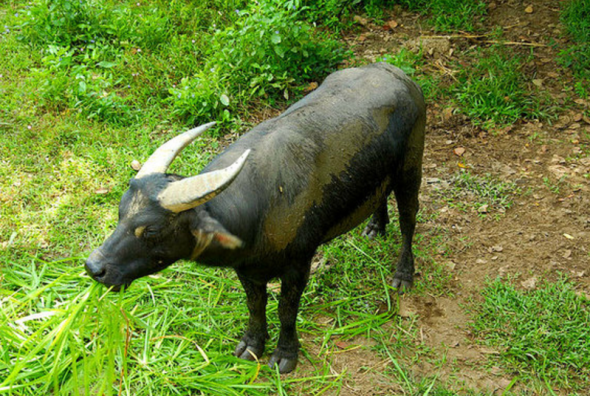
Endangered Species Friday | Bubalus mindorensis
This Friday’s (ESP) Endangered Species Post, I’m touching on a very undocumented species of buffalo that is so endangered - its extremely likely the species will go extinct within the next ten years maximum. (Photographer unidentified).
Listed as (critically endangered) the species was primarily identified back in 1888 by French born Dr Pierre Marie Heude (25 June 1836 – 3 January 1902) whom was a French Jesuit missionary and zoologist. Born at Fougères in the Department of Ille-et-Vilaine, Heude became a Jesuit in 1856 and was ordained to the priesthood in 1867. He went to China in 1868. During the following years, he devoted all his time and energy to the studies of the natural history of Eastern Asia, traveling widely in China and other parts of Eastern Asia.
Endemic to the Philippines B. mindorensis first came to the attention of environmentalists when conservationists began studying the Mindoro Water Buffalo in the early 1940’s of which they found insufficient data relating to the species. Unfortunately from 1986-1996 the species was then suddenly re-listed as (endangered).
Yet the Tamaraw had been known to overseas and native conservation scientists for over THIRTY YEARS of which today we’re now seeing a possible new extinction occurring within the Philippines. How is this possible, when scientists knew about the status of the species, why hasn’t a single zoo removed small populations to house in protective breeding captivity for later reintroduction into the same habitat, or new pastures?
Meanwhile from the year 2000 to 2008 the species was again (re-listed from endangered to critically endangered). Today the Tamaraw is now bordering complete extinction within the wild, and from what we know there is ‘possibly’ no protective captivity projects anywhere around the globe to preserve the species for future reintroduction in the wild. We do hope that we’re wrong?
From what we know based on the last census from 2013 (three years ago) there was noted within the wild only 105 mature individuals remaining. This equates to exactly 105-210 mature individuals (estimate). Within the past three years its very likely we have probably lost half of the remaining populations known, which could mean there is only 52-205 mature individuals remaining within the wild to date.
The species is not known to be fragmented, however populations are still declining. The major threat was once identified as hunting, although ‘allegedly’ isn’t known to be a threat now?. As a scientist and environmental crime CEO I find this very difficult to comprehend, due to the amount of horned ungulates which are being located throughout South East Asia. I must state though: my environmental crimes officers as yet haven’t located any Tamaraw horns or trophy heads.

Image: Tamaraw. Credits: Ruisu Fang.
Formerly, Tamaraw were found across the whole of Mindoro from sea level to the high peaks (to over 1,800 m), inhabiting open grassland or forest glades, thick bamboo-jungle, marshy river valleys, and low to mid-elevation forests. The species is currently confined to a few remote areas over 200 m, and is most often recorded in secondary forest and mixed forest/grassland.
Tamaraw are largely solitary, although females occur with offspring. Males and females occasionally associate temporarily throughout the year, which is similar to other bovines species, such as African buffalo, banteng and gaur. The solitary nature of the species is probably an adaptation to forest habitats, where large groups would prove to be a hindrance. Tamaraw feed primarily on grasses, as well as young bamboo shoots, in open grasslands, resting within tall grasses or dense forest. Although formerly diurnal, Tamaraw have become largely nocturnal due to human encroachment and disturbance.
“WE’RE LOSING THEM, AND FAST”
I do find it quite disheartening to know that the Philippines “national animal symbol” isn’t really being preserved or even protected from nearing complete extinction, although there are some projects out there that are helping to save the species from extinction, the problem is of course, as usual, funding!. One would think that a country that’s so wealthy, and a country that has introduced so many animal, wildlife and environmental laws would at least be fighting to protect the tamaraw. From what I have read and heard from the locals - they are trying their utmost hardest, unfortunately not everyone thinks the same as many kind Filipinos.
THREATS
The main current threat to the Tamaraw is habitat loss due to farming by resettled and local people, with a high human population growth rates in and around its remaining habitat. In some areas, fires set for agriculture are a threat to the species’ habitat. Cattle ranching and farming activities pose a number of threats, including the risk of diseases spreading to the Tamaraw from livestock and burning of pastures leading to a reduced number of palatable grass species.
Historically, Tamaraw were hunted for both subsistence and sport, which led to a period of drastic decline in numbers of individuals and populations. Hunting was carefully regulated prior to World War II, but since then a growing human population, logging operations, ranching, and widespread availability of firearms on Mindoro have caused a dramatic decline in numbers.
Since the 1980s, sport hunting has reduced due to a decline in the Tamaraw population, closure of nearby ranches, and more intensive patrolling and awareness activities since the establishment of the protected area. International trade in this species or its derivatives has not been reported. Although protected by law, the illegal capture and killing of this species continues.
While its currently “illegal to poach or hunt” the species “we believe some are still being poached within the Philippines to provide horns to both China and Viet Nam”. As yet there is NO EVIDENCE to back these claims up, however I.A.R.F.A environmental crimes officers have located in Viet Nam a lot of ‘counterfeit Rhinoceros horn’, which when analysed, has proven to us the horn[s] most certainly aren’t from rhinos, but from a buffalo species. So this area of the counterfeit rhino horn trade still needs intensive investigation.
The current plight of the tamaraw is not looking good, and from our own investigations and third party environmental investigations relating to the species - extinction is very likely to occur in around five to ten years (if that).
“THE TAMARAW IS ASIA’S NEXT EXTINCTION”
Thank you for reading.
Dr Jose Carlos Depre. PhD. MEnvSc. BSc(Hons) Botany, PhD(NeuroSci) D.V.M.
Environmental, Botanical & Human Scientist.
Endangered Species Monday | Heteroglaux blewitti - Extinction is now Imminent.
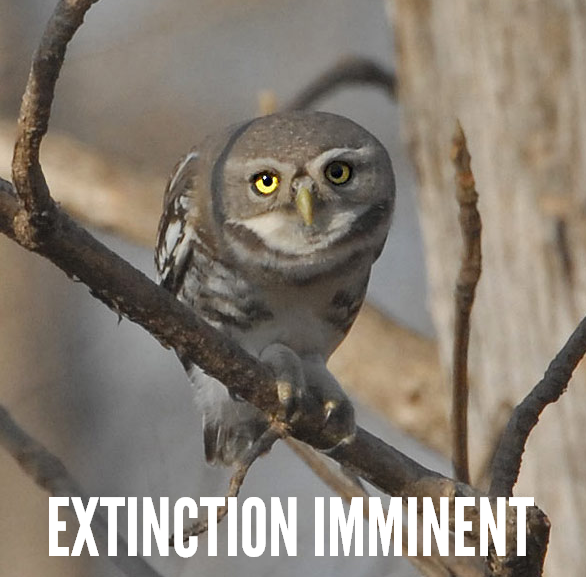
Endangered Species Monday | Heteroglaux blewitti - Extinction is now Imminent
This Mondays (ESP) article (Endangered Species Article), I am am documenting yet again on a species of forest owl (being the third time). This time I know for sure the species is going to go extinct - and sadly there is little that can be done to preserve the bird, although environmentalists are still battling, unfortunately it’s not looking good at all. (Image Credit: Birds of the Bible for Kids).
Listed as (critically endangered), the species was identified back in 1873 by Dr Allan Octavian Hume CB (6 June 1829 – 31 July 1912) was a civil servant, political reformer, ornithologist and botanist who worked in British India. He was one of the founders of the Indian National Congress, a political party that was later to lead in the Indian independence movement. A notable ornithologist, Dr Hume has been called “the Father of Indian Ornithology” and, by those who found him dogmatic, “the Pope of Indian ornithology.”
As an administrator of Etawah, he saw the Indian Rebellion of 1857 as a result of misgovernance and made great efforts to improve the lives of the common people. The district of Etawah was among the first to be returned to normalcy and over the next few years Dr Hume’s reforms led to the district being considered a model of development. Dr Hume rose in the ranks of the Indian Civil Service but like his father Joseph Hume, the radical MP, he was bold and outspoken in questioning British policies in India.
He rose in 1871 to the position of secretary to the Department of Revenue, Agriculture, and Commerce under Lord Mayo. His criticism of Lord Lytton however led to his removal from the Secretariat in 1879. Back in 1988 the Forest Spotted Owlet was listed by environmentalists as threatened. Unfortunately since the 1980’s habitat destruction, poaching, deforestation and gradual human population increases have skyrocketed.
“CONTRADICTIONS”
Conservationists allegedly from 1994-2012 battled hard to preserve the species of Spotted Owlet, regrettably their battles have been lost. Back in 2013 a further census was undertaken of which proved the species was nearing complete extinction within the wild. Today (2016) its incredibly likely we’ll lose the Spotted Owlet from all of its range.
Endemic only to India there is estimated to be (from the last census of 2013) a depressing total of 50-260 mature individuals remaining. The total number of “sub-populations has been identified as 2-100. Furthermore within the past ten years from 2006-2016 there has a been “ALLEGEDLY” a continuous population decrease of exactly 10%-19%. International Animal Rescue Foundation India has also reported within the past four years that “very small populations known are still decreasing”, and from records kept the species is highly likely to be extinct within the next 730 days, which is exactly two years.
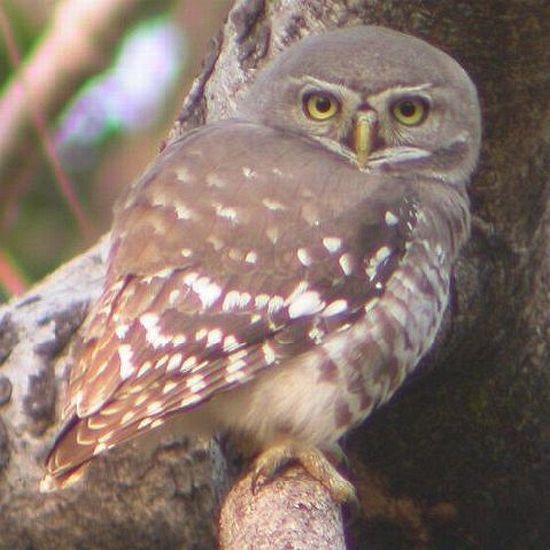
Image credit: Ashley Banwell / World Birders
The International Union for the Conservation of Nature RED LIST have ‘deliberately lied’ and ‘misinformed the general public’ stating the the bird listed hereto was extant from the years of 1988-1996. Conservationists from International Animal Rescue Foundation India in New Delhi hasn’t no reports from 1988-1996 because the bird was only re-discovered in 1997 after it was described in 1873, and it was not seen after 1884 and considered extinct until it was rediscovered 113 years later in 1997 by Pamela Rasmussen. Source: Ripley, S. D. (1976). “Reconsideration of Athene blewitti (Hume).”. J. Bombay Nat. Hist. Soc. 73: 1–4.
So whatever the IUCN are talking about is either codswallop or deliberate misinformation to garner further donations from the public?. I mean how on earth can one make this absurd lie up? Maybe the IUCN can produce documented evidence that proves the species has been active from the 1980’s to 1997? I highly doubt that they can, furthermore this lie (among many more) also brings into question any other lies the organisation “may have been publishing within the public domain” to misinform the general public?
Moving on - the population is estimated (as explained) to number 50-249 mature individuals based on the number of records from known sites, with c. 100 individuals now recorded from Melghat Tiger Reserve. This estimate is equivalent to 75-374 individuals in total, rounded here to 70-400 individuals. Given the increasing number of records and sites known within its range it may prove to be more common than previous evidence has suggested.
Trend Justification: The species faces a number of threats which in combination are suspected to be causing a decline at a rate of 10-19% over ten years.
THREATS
Listed on CITES APPENDIX I (The highest listing) meaning all hunting, poaching and any trade of this species is strictly forbidden (unless otherwise stated). Given its rarity, identification of threats is difficult. Forest in its range is being lost and degraded by illegal tree cutting for firewood and timber, and encroachment for cultivation, grazing and settlements, as well as forest fires and minor irrigation dams.
The site of its initial discovery in 1872 (Chhattisgarh) has completely been encroached by agriculture. Large areas of forest in the Yawal Wildlife Sanctuary and Yawal Forest Division as well as the Aner Wildlife Sanctuary and the Satpuda mountain ranges in Maharashtra have recently been subject to encroachment leading to habitat loss for this species.
It is likely that other forest areas where it occurs are under similarly intense pressure. Overgrazing by cattle may reduce habitat suitability. The proposed Upper Tapi Irrigation Project threatens 244 ha of prime habitat used by the species. It suffers predation from a number of native raptors, limiting productivity, and it faces competition for a limited number of nesting cavities.
The species is hunted by local people and body parts and eggs are used for local customs, such as the making of drums. Pesticides and rodenticides are used to an unknown degree within its range and may pose an additional threat.
These owls typically hunt from perches where they sit still and wait for prey. When perched they flick their tails from side to side rapidly and more excitedly when prey is being chased. It was observed in one study that nearly 60% of prey were lizards (including skinks), 15% rodents, 2% birds and the remaining invertebrates and frogs. When nesting the male hunted and fed the female at nest and the young were fed by the female.
The young fledge after 30–32 days. The peak courtship season is in January to February during which time they are very responsive to call playback with a mixture of song and territorial calls. They appear to be strongly diurnal although not very active after 10 AM, often hunting during daytime. On cold winter mornings they bask on the tops of tall trees. Filial cannibalism by males has been observed.
Thank you for reading.
Dr Jose Carlos Depre - PhD. MEnvSc. BSc(Hons) Botany, PhD(NeuroSci) D.V.M.
Environmental, Botanical & Human Scientist.
www.speakupforthevoiceless.org
Endangered Species Monday | Brachylophus fasciatus.
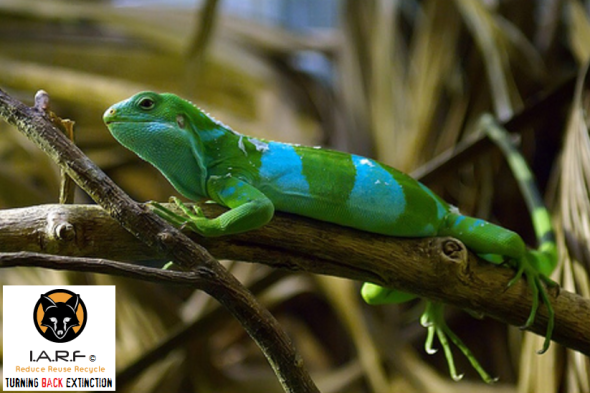
Endangered Species Monday | Brachylophus fasciatus
This Monday’s (ESP) Endangered Species Watch Post report I document on a rather “undocumented species” of iguana identified back in the 1800’s. (Photographer unknown)
Identified back the 1800’s, and listed as [endangered] the species was originally identified by French Dr Alexandre Brongniart (5 February 1770 – 7 October 1847) who was a French chemist, mineralogist, and zoologist, who collaborated with Georges Cuvier on a study of the geology of the region around Paris.
Dr Alexandre Brongniart was born in Paris, the son of the architect Alexandre-Théodore Brongniart and father of the botanist Adolphe-Théodore Brongniart. He was an instructor at the École de Mines (Mining School) in Paris and appointed in 1800 by Napoleon’s minister of the interior Lucien Bonaparte director of the revitalized porcelain manufactory at Sèvres, holding this role until death.
The young man took to the position a combination of his training as a scientist— especially as a mining engineer relevant to the chemistry of ceramics— his managerial talents and financial acumen and his cultivated understanding of neoclassical esthetic. He remained in charge of Sèvres, through regime changes, for 47 years.
Commonly known as the Fiji Banded Iguana, Lau Banded Iguana, South Pacific Banded Iguana, or Tongan Banded Iguana the species is unfortunately endangered and nearing extinction within the wild. A reptilian, and member of the iguana family the species has been placed within the order of (Squamata).
Within the past TWO DECADES the species has undergone a decline of some 50% throughout its range. Furthermore species declines are still ongoing with no apparent let up neither, (threats have been noted as significantly severe and widespread).
Without conservation intervention, the degradation observed during the last 20 years is predicted to cause further declines over the next 20 years that approaches 80% and potentially will be found to be even higher with further population analysis. Basically unless conservation efforts are improved or continue then we will lose the species very quickly.
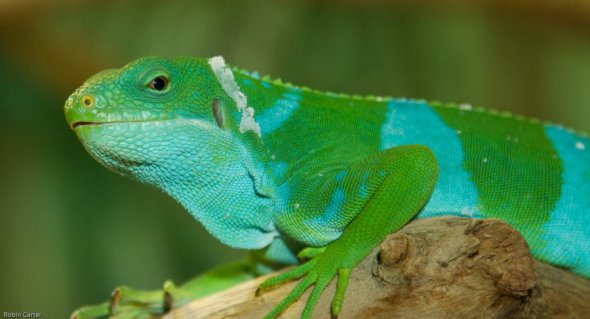
Image: Fiji Banded Iguana (Credits: Robin Carter)
Now to some humans this may not seem much to worry about. However let me ask you this. Have you experienced a rather large number of flies bothering you, mosquitoes, insects, and general bugs wreaking havoc with your everyday life? If the answer is “yes”, then maybe you need to be paying attention to my articles. Reptiles loves flies, and without reptiles there will be more flies.
Endemic to Fiji, the species has recently been introduced to Tonga. Among all the islands surveyed for the presence of Lau Banded Iguana, only on the two Aiwa Islands were enough lizards found to estimate a population size, this was estimated to number less than 8,000. That population size is concerning (especially when we take into consideration life span, gestation, and threats). 8,000 can soon turn into 1000 in under five years.
Although there is no official “population size estimates”, its believed from census reports (which I myself do question), within the past 35-40 years the species has undergone (as explained above) a decline of 50%. Discussions with island residents indicate that on most islands the iguanas are now more rare than they had been in the recent past.
Most islands in the region are now inhabited and iguanas were generally found in degraded forests or remnant forest patches, but not in proximity to villages or gardens. Surprisingly, among the uninhabited islands surveyed only one was found to have iguanas present, but this is likely due to the abundance of cats present on the iguana-free islands. It is known that local residents intentionally translocate kittens to these uninhabited islands for rat control.
In summary, a total of 52 islands in the Lau Group and Yasayasa Islands were visited between 2007 and 2011 and iguanas were detected or reported from only 11 islands, with an additional report from one island that was not visited. The sheer fact we only have on ELEVEN ISLANDS instead of FIFTY TWO Fiji Banded Iguanas, just goes to show we have serious problems here that need addressing before its to late.
Iguanas were abundant on only three islands, the two neighbouring Aiwa Islands and Vuaqava, all of which are uninhabited. Goats have recently populated all three of these islands and Vuaqava has a seemingly large cat population (which could be a threat). Most of these 53 islands should have had resident iguana populations. For example, two islands with historic populations, Moce and Oneata, were described by the Whitney Expedition and have since been extirpated. Given these results, it appears that iguanas could be remaining on about 20% of the islands in the region and are abundant on only 5%.
“SO WHAT ARE THE THREATS?”
The current band at which the Fiji Banded Iguana sits in (in regards to known population levels) is 8,000 120,000 mature individuals. Now that doesn’t mean we have 8,000 or 120,000 mature individuals. The current band basically means what we have “assumed the population” based on very sketchy and rough census estimates. What we do know, is that from the last census conducted only 8,000 were eye balled (meaning that 8,000 were physically witnessed). Further census counts are underway.
Lau Banded Iguanas are sometimes locally kept as pets, and this was observed on three different islands during surveys in 2011. Historically, these iguanas would have been a local food source, similar to the larger extinct species (Lapitaiguana and B. gibbonsi) in the region, but there are no recent records of human consumption. The black market trade in Brachylophus does not include this species and is unlikely to be a threat in the future as its remaining localities are very remote.
Black Rats (Rattus rattus) and feral cats (Felis catus) are the main mammalian predators threatening the persistence of iguanas and are capable of causing local extinctions in a relatively short time period. Fortunately, mongoose has not been introduced to the Lau Group yet, and maintaining it free of them is an important biosecurity issue. On a few islands, free-roaming domestic pigs (Sus scrofa) were observed to cause major disturbance in small forest patches, turning large areas to bare mud that is no longer suitable for iguana nesting.
Even in the absence of goat herding, forest burning is widespread and is increasingly one of the biggest threats to iguana habitat and their persistence. Continued deforestation on the small islands where Lau Banded Iguanas remain is predicted to cause additional local extinctions over the next 40 years. In particular, on the large islands of Lakeba and Vanua Balavu where iguanas should have been numerous, there has been significant forest loss through deforestation, burning, and fragmentation.
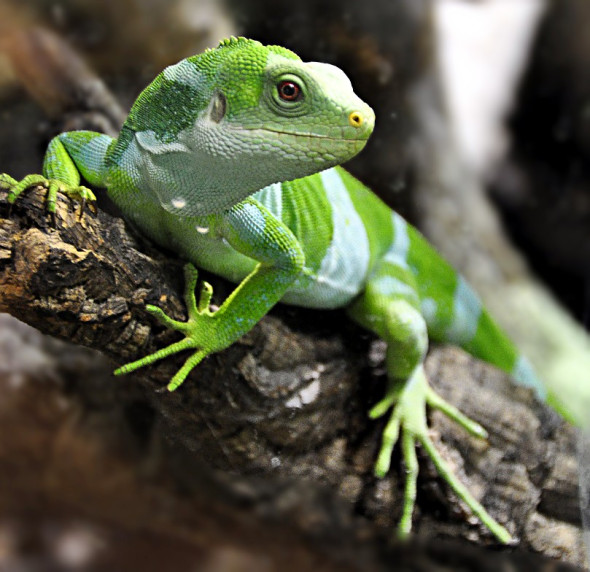
Image: Fiji Banded Iguana (Photographer unknown).
Additional threats to the native forests include further development of urban and village areas, plantation agriculture, and logging. In particular, harvesting Vesi Tree (Intsia bijuga) for use in traditional carving on several islands (for example, Kabara) has significantly reduced the native forest. Forest conversion to Caribbean Pine plantations is also significant, especially on Lakeba.
Proposed development of tourism resorts, on the smaller islands in particular, has significant impacts on these habitats, possibly leading to losses of entire iguana populations as has been observed elsewhere in Fiji. Finally, proposed new cruise ship routes to the remote Lau islands will require construction of new infrastructure and is likely to be a source of invasive species from Viti Levu unless strict biosecurity measures are enforced.
The impact of the recent introduction and spread of the invasive alien Common Green Iguana (Iguana iguana) in Fiji are not yet known for this species but have been shown to have significant detrimental effects everywhere they have been introduced. Eradication for this invasive now appears unlikely, and it is possible the Green Iguana will continue to spread to other well-forested islands despite eradication efforts. Green Iguanas are vastly more fecund and aggressive than native iguanas and may have significant effects on remnant small island populations.
At minimum, this introduction has caused considerable confusion in the local education programmes aimed at protection of Banded Iguanas versus eradication of the Green Iguanas, since juveniles of the latter appear superficially similar. The northern Lau Islands are very close to Qamea where the Green Iguana was first introduced and are at high risk of invasion.
Irruptions of invasive alien Yellow Crazy Ants (Anoplolepis gracilipes) are known to occur on many of the southern Lau islands. Even though these ants were introduced to Fiji over 100 years ago, it is not understood what causes populations to periodically irrupt in huge numbers on some islands. When Crazy Ants irrupt, the entire ground surface, shrubs, and trees are entirely covered with ants and it has been observed that native skink and gecko abundance drops greatly during this time.
The impact of aggressive ant irruptions on iguana reproduction and recruitment is not known, but is likely to suffer similarly to other lizards. Lau Banded Iguanas are sometimes locally kept as pets, and this was observed on three different islands during surveys in 2011 (as explained above).
Historically, these iguanas would have been a local food source, similar to the larger extinct species (Lapitaiguana and B. gibbonsi) in the region, but there are no recent records of human consumption. The black market trade in Brachylophus does not include this species and is unlikely to be a threat in the future as its remaining localities are very remote.
Listed as endangered, the current future is not as yet known. However what we do know is that the Fiji Banded Iguana does not inhabit the ground it once did. Threats are wide, and the species has undergone a large population decline.
Thank you for reading.
Dr Jose C. Depre PhD. MEnvSc. BSc(Hons) Botany, PhD(NeuroSci) D.V.M.
Environmental, Botanical and Human Science.
THE BIRDS | WHAT ARE THEY TRYING TO TELL US?
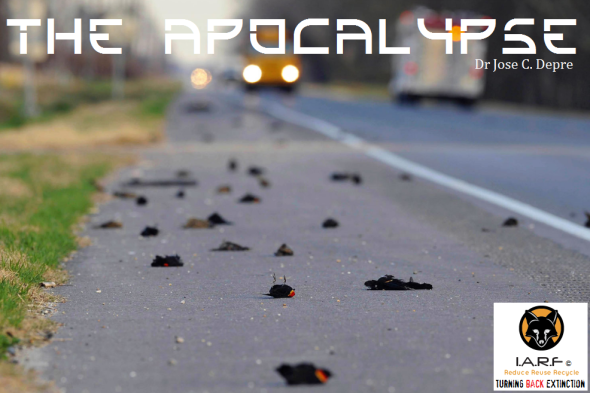
THE APOCALYPSE | WHAT ARE THEY TRYING TO TELL US?
Apocalypse
əˈpɒkəlɪps (Greek/Latin)
Noun: the Apocalypse: The complete final destruction of the world, as described in the biblical book of Revelation. “the bell’s ringing is supposed to usher in the Apocalypse”. An event involving destruction or damage on a catastrophic scale.
Zephaniah 3:8
“Therefore wait for Me,” declares the LORD, “For the day when I rise up as a witness Indeed, My decision is to gather nations, To assemble kingdoms, To pour out on them My indignation, All My burning anger; For all the earth will be devoured By the fire of My zeal.
Two days ago I wrote a brief extract in relation to some 1,300 birds assessed by the International Union for the Conservation of Nature (IUCN) Red List that scientists have predicted will be extinct come 2080. Many of these extinctions will be caused by habitat destruction, persecution, poaching, pet trade, lack of prey for birds to feed on, down to declining nesting areas destroyed by (increasing human population around the globe). These threats are what we know about, they are also documented within many articles I and third (non-related) organisations write about too.
However since the 1980’s scientists have been in a way trying to understand why birds die for en masse. Birds like many other animals don’t just die for no reason. Birds don’t decide to wake up one morning, then a few hours later commit suicide by hurtling to the ground at over 60mph thus dying instantly. Environmentalists from International Animal Rescue Foundation America have been documenting since 2010-2016 mass bird deaths around the globe.
Five days ago a meeting took place in NYC involving US - I.A.R.F environmentalists, bird watch groups in America, and nine scientists from Detroit and New York. This meeting was different from what we’d been planning; meaning we needed to get to the bottom of what was causing mass bird deaths around the globe, and were these deaths telling us something?. These deaths were not just as a result of habitat destruction, deforestation, human population increasing, industrialization, poaching or indiscriminate killing.
These deaths were caused as a result of something more sinister, a human problem maybe, something within the air, toxic pollution, aircraft noise, or as many scientists continue to bleat to the public “El Nino weather disturbances”?. The fact of the matter is, no scientist or governmental science group has yet established why so many birds are dropping from the skies, killing themselves, falling over dead, or as explained above flying into the ground at break next speed. The situation is so concerning that many environmental groups are now demanding answers from their local environmental governmental examiners. And as you may guess, El Nino has used as a silencing tool once again.
On Tuesday (03.08.2016) I contacted the Meteorological Office in Devon, Great Britain for more information with regards to what scientists have been stating from 2014-2016 are “El Nino events”. I myself didn’t 100% believe that we we’re going through an prolonged El Nino event. So in order for me to verify my concerns I had to speak to climatologists that were more clued up on this weather phenomenon than I was, and as I suspected, there hasn’t been as yet a “recorded El Nino event from the years of 2014-2016”, interesting!
El Nino:
“An irregularly occurring and complex series of climatic changes affecting the equatorial Pacific region and beyond every few years, characterized by the appearance of unusually warm, nutrient-poor water off northern Peru and Ecuador, typically in late December. The effects of El Niño include reversal of wind patterns across the Pacific, drought in Australasia, and unseasonal heavy rain in South America”
However even if an El Nino event was occurring, when I explained my concerns to the Devon board of climatologists they also agreed with me that birds don’t just drop from the skies, or suddenly die due to an El Nino event. Furthermore they also agreed with me; should any scientist use this weather event to explain why (100, 1000 or 10,000 birds just all of a sudden die), then them scientists are basically trying to keep the public calm. Interesting yet again.
Mass Bird Deaths:
The following information below relates to all recorded mass bird deaths around the globe from January 2016 to 28th July 2016. Avian bird flue deaths have been excluded from this report. Every single bird death listed hereto is unexplained. Avian influenza deaths have been excluded because the cause of death is known.
28th July 2016 - 300 sea birds have washed up dead since May in Washington State, America. 15th July 2016 - 3,500 ducks found dead along the river Palar in India. 14th July 2016 - Large number of sea birds washing up dead is ‘alarming’ in Victoria, Canada. 28th June 2016 - Hundreds of dead birds washing up along lake Erie in New York, America. 23rd June 2016 - Hundreds of dead birds found in fields ‘due to pesticides’ in Chandrapur, India. 2nd June 2016 - Large number of dead birds being found, ‘a mystery’ in Martins Ferry, Ohio, America. 10th May 2016 - Hundreds of snow geese found dead in Idaho, America.
9th May 2016 - 9,000 birds killed by huge hailstorm in Utah, America???. 9th May 2016 - 100 dead sea birds found washed up on beaches in El Tabito and Matanzas, Chile. 8th April 2016 - Dozens of dead birds found along a road in Fairfax County, Virginia, America. 7th April 2016 - 5,000 birds killed by storm in Jessore, Bangladesh???. 29th March 2016 - 100 dead birds found along I-5 in Redding, California, America. 22nd March 2016 - Dozens of dead birds found along a road in Elmira, New York, America. 16th March 2016 - Hundreds of dead crows found near Battle Creek in Michigan, America. 16th March 2016 - UPDATE: sea bird die off now up to 36,000 in Alaska, America. 4th March 2016 - Large number of dead sea birds washing up on beaches in Volusia, Florida, America. 26th February 2016 - 800 dead ducks removed from reservoirs in Caceres, Spain. 21st February 2016 - Dozens of dead birds found along a highway in Ohio, America. 18th February 2016 - Hundreds of dead sea birds found washed up in Trujillo, Peru.
18th February 2016 - Hundreds of birds fall dead from sky in Odessa, Ukraine???. 13th February 2016 - MASSIVE - 150,000 penguins die after giant iceberg becomes grounded in Antarctica. 10th February 2016 - Dozens of dead sea birds, plus other marine creatures found on a beach in Malibu, America. 4th February 2016 - Dozens of birds suddenly die in Wichita, Kansas, America. 4th February 2016 - Dozens of Pelicans dying, reason unknown on Grand Isle, Louisiana, America. 28th January 2016 - 22,000+ sea birds found dead, ‘biggest die off ever recorded’, along beaches Dead birds in alaskain Alaska, America. 28th January 2016 - Hundreds of sea birds found dead on a beach on Sea of Galilee, Israel. 25th January 2016 - Thousands of chickens killed by ‘mysterious disease’ in Kampong Thom, Cambodia. 6th January 2016 - Hundreds of dead birds found in Cueramaro, Mexico.
The report above is more than concerning, its actually horrifying. Fortunately many people have also sent to us videos and uploaded videos onto YouTube that clearly show (El Nino) is not to blame. Take a look at the video below, and explain to us how El Nino was responsible for these mass bird ‘suicide deaths’? The 2012 video report states:
“More than 100 birds — perhaps as many as 300, according to an eyewitness — were found Dec. 30, 2012, on and around Boyds Creek Road in Seymour, Tenn. While many of the birds were actually on the road, dozens more were found in a nearby field. As far as 60 yards away, individual birds, believed to be starlings, were found”…
Seymour, Tenn is located within the United States (Seymour, Tennessee). We did search through weather events relating to this video. On the day it was uploaded and from the sketchy media reports there were no freak weather occurrences, heavy rains, hail storms, tornadoes or anything to provide a reasonable explanation as to why so many starlings just all of a sudden died. Yet in few reports El Nino was blamed?
The report above (bird deaths) provides much startling data in relation to the Unites States too. From the start of January 2016 to July 28th 2016 most of the bird deaths recorded above are actually occurring within the United States. Furthermore we also have the so called “experts” that are providing their theories as to why so many birds are dying; in their own words “it only really happens once or twice every few years”. That’s absolute nonsense.
From 2005 a third party organisation aligned to I.A.R.F.A has been recording (and continues to record) mass bird deaths every year, and its not just one species neither. The video below touches up on everything that we already known about. Yet, it fails to touch up on what many of you don’t know. Watch the video please. as it does provide some proof, however the author is not projecting the real true story here as to why so many birds are dying.
“SO WHAT’S CAUSING THESE MASS DEATHS?”
Well firstly not everything is attributed to climate change, habitat destruction, or localized pollution. The author of the video above also seems to forget that America is not the only country that hosts millions of birds. For example he states that a mass die off of birds in Arkansas was caused by fireworks? While there may indeed be some truth to this theory, do we see the same mass bird die offs in England on Guy Fawkes night, Burns Night in Scotland, Chinese New Year, or Diwali? well the answer is, no we don’t. If we did we’d most certainly be documenting about it, and doing something to stop these events from harming our fauna.
From the tropics to the pole some of the worst bird declines and mass deaths are being witnessed within Africa, and Asia. North America’s bird populations “needed to keep the planets food crops in tact” are also declining to worrying levels never seen before. Vultures, raptors, eagles, swifts, swallows, colonies of sea birds, murres, puffins, down to shorebirds are all declining rapidly. Red knots in the Western Hemisphere are also vanishing ever so quickly. Sandpipers. spoonbills, pelicans, storks are among some of the migratory birds declining too.
BIRDS AND BIOCHEMISTRY
Today birds are telling us about new threats to the environment and potentially to human health in the coded language of biochemistry. Through analysis of the inner workings of birds’ cells, scientists have been deciphering increasingly urgent signals from ecosystems around the world. Like the fabled canaries that miners once thrust into coal mines to check for poisonous gases, birds provide the starkest clues in the animal kingdom about whether humans, too, may be harmed by toxic substances.
No birds to warn us = a threat to humans. And they prophesy what might happen to us as the load of carbon-based, planet-warming gases in the atmosphere and oceans climbs ever higher. Birds are the planets warning meters of danger, just as dogs warn us that intruders are nearing our property, and frogs inform us that the local rivers, ponds, and meadows have been polluted. Each species informs us of something.
Birds like rodents and amphibious creatures provide to us via their biochemistry coding, clues, and answers as to what is going on within the environment they are living in, and why they died. Birds that drop out of the sky during a (morning firework display)? that were allegedly scared would then show to scientists via their bloods, stress hormone changes. Neither of the birds in the United States that died as a result of fireworks - died as a result of fireworks, furthermore there is no PME evidence to back these claims up, just hearsay.
Dr Rachel Carson was the earliest and best known scientist to link the fate of birds to that of humans. Alerted by reports of sharp declines in birds of prey and songbirds, she began to examine the effects of the pesticide DDT. It was the first modern synthetic pesticide, in wide use after World War II to control mosquitoes and other insects. Her book Silent Spring, published in 1962—the title echoes the poet John Keats’s celebrated line “And no birds sing”—explained that DDT moved up through food chains, from the insects it was designed to kill to the creatures that ate them. It accumulated inexorably in tissues, organs, and fat in top predators such as peregrine falcons, ospreys, bald eagles, and pelicans.
By 1972, after public uproar, DDT was banned in the United States and eventually banned around the world except in malaria-prone countries, mostly in Africa. While DDT has indeed been taken out of service - there are other chemicals that are entering the food chain - and its birds like frogs and toads, newts and other amphibians that inform us when threats to humans are increasing due to chemicals making their way into or next to the food chain.
Interestingly - since the 1970’s DDT was banned right? Well just to give you an example of how powerful these chemicals are, and what threats they pose to human health, why not look up why songbirds are still dropping dead in St Louis, Michigan, next to an old chemical plant! So birds are still informing us that despite bans in place, and these chemicals are no longer being used, there are still threats to both humans and other animals from chemical residues. Eventually that factory will be demolished, but only because birds have told us in relation to PME tests on their carcasses.
Studies on birds exposed to chemicals from the 1980’s (onwards) have also shown us how these chemicals are altering human hormones and even cell changes. Causing cancers and other diseases and illnesses. More “human health scientists” are taking note of birds for clues or answers relating to why humans are falling ill, or dying. Take a look at how we found where the Ebola virus originated from in West Africa during the last outbreak, a single bat species. Today scientists can capture birds, test them, band them, let them go, and then catch them years later to see what’s changed in relation to “environmental chemical threats”. Birds also normally maintain relatively stable numbers, unlike small mammals. So when their populations take a dive, it means something noteworthy is going on.
“THAT’S WHAT BIRDS ARE TELLING US”
So as I have explained above, birds don’t just drop out of the sky for the sheer fun of it, and yes there are a wide number of problems such as habitat destruction, environmental disturbances, but more importantly - (pollution). Pollution has been linked to 90% of all bird deaths listed above from January to July 2016.

Image: Dead robin - St Louis, Michigan
The dead robin pictured above explained to scientists (via avian coding biochemistry) that the old disused chemical plant these birds and others nest and live next to was the primary cause for their death. Read more below:
http://www.environmentalhealthnews.org/ehs/news/2014/aug/michigan-ddt-cleanup Although its rather sad and unfortunate these birds died. They eventually told scientists via coding biochemistry why they died, and that has since provoked experts to now order the destruction of this old disused chemical plant, that was also causing serious health problems in humans living next to the chemical plant.
So when we begin to see mass bird deaths as explained above, these deaths must not be ignored. While the birds themselves aren’t singing to us that there is indeed a problem, their death[s] are indeed explaining to us that something isn’t quite right within the environment. The video below PROVES why we humans must ensure that our bird life populations around the globe are protected.
Failing this chemicals and toxins that are are not as yet harmful to us, but are to birds will eventually wreak havoc among the human and animal world. DDT was banned decades ago, yet its still causing illnesses, cancers, and mass bird deaths in America and around the globe.
“So when bird populations take a dive, it usually means something noteworthy is going on”
I find it quite alarming that within the past five years the large number of bird deaths at sea, and inland around the planet has simply been ignored, shrugged aside or scientists have basically given a half ass answer as to why they died.
SOMETHING IN THE AMERICAN AIR?
Following Britain’s Clean Air Act of 1956, it was reported that several species of birds returned to London. In 1986, Mexico City’s air pollution levels were so severe that various news sources reported birds falling from the sky in droves. In 2013, particulate matter from nearby forest fires shrouded Singapore so completely that locals found dead birds near their homes.
Now lets take a look at a handful OF UNITED STATES BIRD DEATHS, DEATHS THAT HAVE BEEN TELLING SCIENTISTS THAT SOMETHING ISN’T QUITE RIGHT:
- 9th May 2016 - 9,000 birds killed by huge hailstorm in Utah, America???
- Dozens of dead birds found along a road in Fairfax County, Virginia, America. 7th April 2016
- March 2016 - 100 dead birds found along I-5 in Redding, California, America
- Dozens of dead birds found along a road in Elmira, New York, America
- 16th March 2016 - Hundreds of dead crows found near Battle Creek in Michigan, America
- 4th February 2016 - Dozens of birds suddenly die in Wichita, Kansas, America
“Mexico City’s air pollution levels were so severe that various news sources reported birds falling from the sky in droves”
If this article doesn’t concern you then ignore it, move on, and do not question it. I.A.R.F documents every year on mass animal deaths, these deaths are all recorded, and then investigated. Finally, North and South American bird population are declining to worrying levels. As you can see above the report in relation to LONDON and MEXICO resulted in actions being taken to preserve life.
However - take our two winged friends away, and you’ve a whole lot of nasties to contend with.
“OPEN YOUR EYES”
Dr Jose C. Depre.
PhD. MEnvSc. BSc(Hons) Botany, PhD(NeuroSci) D.V.M. Environmental & Human Science
FACEBOOK: IVORY TRADE OFF THE SCALE | VIET NAM | PART I
FACEBOOK | IVORY TRADE IN VIET NAM
Written by Dr Jose C. Depre (Chief Environmental Officer).
By the time it takes me to finish this document an estimated 20-50 elephants will have been slaughtered. Once you turn your head and continue to do nothing, come tomorrow 100 elephants would have been killed for their ivory to supply the South East Asian black market. Back in January 2015 I launched yet another online and ground intelligence gathering operation relating to the illegal wildlife trade; We are focusing on China, Viet Nam, Laos, and Thailand of which the team, a twenty four strong experienced male and female unit originate from all backgrounds. Today I’m focusing more on the online trade which has now increased to worrying new levels.
Since January 2015 when [Operation Stop It] was launched Environmental Crimes Officers have found what we believe is a new trend of ivory trade in operation on the United States platform known as Facebook. External Affairs Officers became aware of the huge trade when investigating a Vietnamese national identified as Mr Trang from June 2015 to December 2015. Unfortunately since providing law enforcement agencies with masses of evidence just on this one trader; very little in the way of arrests and/or confiscations has been witnessed.
The ban on international trade in ivory was introduced in 1989 by CITES (Convention on International Trade in Endangered Species of Wild Fauna and Flora) after years of unprecedented poaching. In the 1980’s, an estimated 100,000 elephants were being killed per year and up to 80% of herds were lost in some regions. However despite the ivory trade ban in place, very little in the way of illegal trade reduction is being witnessed within Viet Nam, China, Laos, and Thailand.
Viet Nam is one country of interest that we’ve noted as hosting “unusually large amounts of (raw ivory tusks), most of which seem to be originating from impounded stocks, with other tusks clearly removed from ivory pyres”. While we are aware a large majority of ivory tusks are originating from Africa, there is also a significantly large amount also originating from Asia. Asian ivory tusks are more favored for carving over that of African elephant tusks.
Image: Two tusks located for sale on Facebook 16.05.16 from | impounded or stolen from pyres?
The two elephant ivory tusks (pictured above) were located on Facebook for sale yesterday which we suspect have originated from a recent or past ivory burn. Normally ivory tusks are white, or a dusty creamy color with some dark tinges to them; embers can clearly be seen on the left hand tusk with visible white dehydration and salt marks too.
Image: Ivory jewelry smuggled from Africa into South East Asia now on sale on Facebook.
While the online trade is no big secret, the fact is Facebook hosts no terms and conditions in place that bans such illegal trade; the Facebook platform has no systems in place to recognize such imagery (I.e raw tusks) using BOTS that can then report back to a third party Policing team. Finally IARFA Environmental Crimes Officers have found Facebook is being exploited by many South East Asian citizens primarily from Viet Nam, and Thailand peddling ivory from Asia and Africa.
Image: Ivory trader weighs up tusks he is trading online via pseudo Facebook account shops.
The image above clearly demonstrates just has serious the ivory trade has become online and on the Facebook social media platform. Traders will commonly show their products to prove their wealth (I.e as a status symbol), or to prove/demonstrate the legitimacy of their products compared to other traders, that may be selling counterfeit ivory. The trader who we can only be name as Mr Phong then demonstrates just how much he will be making come the end of the month. The total amount of ivory Mr Phong is selling on Facebook (pictured above and below) will fetch him around $15,000-$20,000USD depending on how the ivory is sold and/or manufactured.
Image: My Phong weighs up this illegal haul of ivory, fetching him some $15,000-$20,000USD
Despite international and domestic trade bans nothing is actually working, furthermore we do hold concerning evidence that shows without a doubt many tusks are being removed from compounds in Asia and Africa then sold onto the very people that police took the ivory from. Police have been witnessed trading confiscated ivory at high prices back into the hands of smugglers knowing too well they are going to make a good wage due to the high demand for ivory tusk products.
Back in 1992 Viet Nam officially outlawed the ivory trade, unfortunately since the ban was implemented any ivory that was purchased before “Viet Nam’s ivory ban” can still be sold legally so as long as the tusks host the correct certification; Fortunately CITES did rule that “re-worked ivory or any tusks/ivory products that were purchased before or after the 1992 Viet Nam ivory ban that are then re-worked, would then be classed as new ivory (non-exempt) thus making that product that was legal - now illegal.
Meanwhile back in 1975 international trade in “Asian elephant ivory” was also banned. There has been quite a few tusks examined by experts and third party experts located on the United States Facebook platform as originating from Asian elephants. Asian elephant tusks are much smaller than your average African bush elephant tusks. Come the 1980’s it was then stated no fewer than 50,000 Asian elephants existed which are now listed on CITES Appendix One and known to [endangered].
One out of every six Hanoi citizens are dealing ivory on the United States Facebook platform. Most of this ivory is as explained originating from Africa and Asia, with clear and obvious signs of trafficking, and thefts from impounded ivory and ivory pyres.
Image: One of many thousands of online ivory trading Facebook shops in Viet Nam.
The image above was picked up from one of many thousands of Viet Nam ivory traders. Traders establish a sophisticated network of “pseudo Facebook accounts”. These accounts are rarely in the real name of the trader. Traces of some accounts via the IARF Environmental Cyber Crimes Unit have shown ivory traders using Virtual Proxy Networks [VPNs] to conceal their Internet Protocol Address.
Furthermore when dealing over the phone traders normally use cheap (non-smart throw away phones) so that should enforcement agencies locate them, tracing the traders exact whereabouts, and who they are selling ivory onto is almost impossible. Its not uncommon to witness traders with a number of cell phones. One phone (the throw away one) will be used for trade and can easily be disposed of with all evidence destroyed containing names and numbers of ivory dealers and buyers. Meanwhile smugglers, traders and carvers also host a smart phone for normal everyday conversations and general surfing the web or interacting with friends and family on Facebook, Twitter or Weibo.
Back in March of 2016 International Animal Rescue Foundation’s- Environmental Crimes Officers located three Viet Nam ivory trading carving factories all advertised on the United States Facebook platform. Moreover it wasn’t just carvers and ivory advertised for sale; we also located evidence of ivory carving tools, measuring and weighing instruments and “DIY ivory carving instructions for beginners”. The carving instruments below were found in one Hanoi carving workshop (on the Facebook social media platform), meanwhile underneath the bottom image is proof of more raw ivory tusk carving.
Image: Ivory carving tools, Viet Nam, Hanoi used to intricately carve ivory.
Image: In the same carving room more raw ivory tusks were located readied for carving on Facebook.
Environmental Crime Officers have located a staggering 80,000 “ivory and wildlife trade shops” all in operation on the United States Facebook platform, yet little if anything is being done to stop this trade or even restrict traders activities. When submitting this evidence with films, images and Facebook accounts and the current laws on ivory trade to Facebook’s Security Head, Alex Stamos we we’re unfortunately ignored.
Yet Facebook’s moderation team are quite willing to remove accounts that have violated their “bullying, harassment or terrorism polices” (all of which are crimes), sadly the social media platform is unwilling to remove highly active wildlife traders breaking domestic and international wildlife laws that are making a ton daily.
On the 3rd March 2016 the BBC reported “Facebook wildlife trade prompts fears among environmentalists”. Traffic - an Environmental Crimes Investigation Organisation located hundreds of online profiles selling endangered and threatened animal species. Facebook stated “It will not hesitate in removing content that is promoting such trade”. Yet when we contacted Facebook submitting more than enough evidence relating to ivory, rhino horn, tiger and pangolin trade all accounts are still in operation.
Facebook did quote though “They are developing practical solutions to combat trade“, unfortunately these solution’s seem to aimed only at “animals rather than animal parts”. For the time being Facebook has no terms or polices in place that would remove illegal wildlife traders dabbling in rhino horn, tiger parts, pangolins, or [non-exempt] ivory. And with some 1.32+ billion Facebook users, Facebook will we believe now have a large job on their hands in combating such trade as from 2014 trade on the Facebook platform has exploded.
“Investigators are concerned that the use of social media and smartphones means that anyone interested in selling wildlife can rapidly access huge numbers of potential buyers”….
Image: More ivory Facebook shops churning out thousands of euro in ivory, all from raw re-worked tusks.
While Facebook has stated they are developing new measures and applications to combat trade, these new measures and whatever applications will be made to combat trade are all too late. Facebook is probably one of very few platforms where you can actually create “private groups”, where only those that are interested in such trade can enter and interact with other users.
Moreover Facebook provides you secrecy in relation to pages; I.e: Traders can censor which countries they don’t want to view their pages then continue trading whatever they like. In relation to pages there are ways and means around that censorship, which will not be published hereto.
One of the largest items we are seeing traded on Facebook is that of ivory bangles, ivory necklaces, ivory wrist bands, ivory chopsticks, ivory pens, ivory encrusted watches, ivory sex toys and ivory cigarette holders (in the thousands). Overseas tourists that visit Viet Nam are often caught or witnessed buying these small cheap products, and the longer they (the tourist) purchase from ivory carvers and traders, the longer demand will continue to increase and fan out. That is one area of the trade we need all be focusing on (demand) to nip in the bud sooner rather than later.
Ground Sales Survey of Ivory:
Back in 2014, a total of 1614 ground outlets were surveyed in 21 localities throughout Viet Nam. Eighty-five of these outlets (5%) were found to have a total of 2300 ivory items for sale. Buon Me Thuat city was found to have the highest percentage of shops (50%) offering ivory. However since CITES has placed more pressure onto Viet Nam to clamp down on ivory and other wildlife trade, these shops are slowly reducing trade, although we do highly suspect traders are now operating more freely on line from which policing this area of the trade is more difficult.
While it was stated that many shops on the ground had increased somewhat, law enforcement in Viet Nam has allegedly made it more difficult for traders to openly trade ivory that has no exemption. Its is for this reason we now believe Facebook is being used more and more to trade ivory products, and as one can see in the images above - we are talking massive amounts of ivory pieces and products, 90% of which hosts no certification, furthermore the vast majority of traders we’ve located are carving products from “smuggled ivory”.
It is presumed that the currency in which the price is listed or quoted in many ivory surveys may indicate the nationality of the most common buyers in that area. Both observations and questions to particular sellers substantiate the fact that ivory is sold to both “foreign tourists and Vietnamese nationals”. For example in HCMC, the majority of the ivory buyers in the two markets are assumed to be tourists from China as prices were quoted in Chinese Yuan.
Video: Bryan Christy examines the illicit ivory trade. Interesting we have also have located a number of “counterfeit tusks that are being traded online and on the ground”. Please stay tuned for article two that will delve a little deeper into both the counterfeit rhino horn, ivory and tiger part trade.
The HCMC silver and gold shops that also offered ivory (particularly the smaller, religious pendants and figurines) appear to be targeting Vietnamese buyers with prices advertised in VND. In Dak Lak and Ha Tien, the majority of the ivory buyers are assumed to be Vietnamese tourists as prices there were quoted in VND. In Ha Noi, prices were mostly given in USD when enquiries were made, which may indicate that the buyers of ivory pieces are likely to be international tourists.
While the majority of ivory is presumed to be aimed at mostly Asian tourists - there is no real hard hitting evidence that this is in deed true. For example if you was British you’re hardly going to purchase an ivory bangle in GBP, so exchanging that currency into Vietnamese dollars then places that ivory for sale (at just about everyone and anyone) with the correct currency.
It may be somewhat of a shock but the UK is the third biggest source of intercepted illegal ivory entering the United States of America (US), which has been singled out by CITES (the Convention on International Trade in Endangered Species of Wild Fauna and Flora) as a ‘problem country’ with a large domestic ivory trade likely to provoke illegal elephant poaching if not regulated and brought under control. London’s Portobello Road – the biggest antiques market in the world – has been identified as the single major source of this illegal ivory.
Furthermore while antique ivory trade is “problematic” so too is non-antique and the longer these trades persist, more and more elephants will be slaughtered for their tusks. We are growing very concerned now at the large number of ivory dealers operating on Facebook. There is clear evidence that much of this ivory is originating from both Africa and Asia, furthermore as explained - the large number of “raw tusks we are locating clearly shows that security is indeed more than questionable at ports, and pounds that hold confiscated ivory.
Image: Raw African ivory tusks, cut and sold onto Viet Nam carvers, on sale on Facebook.
Back in 2015 (just before Christmas) External Affairs Environmental Crimes Officers located an “unusual amount of raw tusks from Africa” that we suspect had made their way into Viet Nam from China. IARFEIA Officers located on the Facebook platform some 21 whole raw and non-certified elephant tusks, some of them even had blood around the bases indicating these were freshly poached ivory tusks; all of which is in violation of both domestic and international ivory trade laws.
Image: Vietnamese ivory carver aged 19 from Hanoi, Viet Nam.
The image above doesn’t really show much does it? although the other images below shows exactly what this talented young man has been creating from raw African and Asian elephant tusks (and is still creating today with his freinds - all college students). Ivory traders and dealers make no attempt at concealing their identity anymore neither. However there still remains a hardcore number of dealers that will continue to conceal their faces, names, and never post images onto Facebook that depicts them holding raw non-exempt ivory. This belief that ivory traders, peddlers, and smugglers were all but old, is now a myth. Today we’re witnessing traders and carvers as young as 16 years old, taking over from their parents thus fueling the ivory trade evermore on Facebook.
Image: Young trader named as Mr Manh exhibits his newly carved ivory pieces on Facebook.
Image:Mr Manh proudly shows one of many hundreds of ivory pens that are in great demand.
Image: Ivory pen with top off, Viet Nam, Hanoi.
Image: Ivory trader identified as Mr Trang proudly displays carved ivory on Facebook for sale.
Image: More freshly carved ivory cartridge pens on sale in Hanoi, via Facebook.
From 2015 (to date) IARFA Environmental Cyber Crimes Officers and the ground team External Affairs Environmental Crimes Officers have found that Viet Nam is “suspected” of peddling more ivory than China and Thailand. Cyber Crimes Officers are now locating every week on average of 2-3 “raw tusk dealers” operating on Facebook. Meanwhile the database of 80,000 ivory and wildlife trade dealers all operating on Facebook continues to increase by the week.
The whole purpose of this article is to wake people up, and open their eyes. We have a major problem on Facebook, and Alex Stamos Facebook Head Security Officer doesn’t seem to be taking much notice of this ongoing and rather concerning problem relating to just the ivory trade alone. We’ve not got much time left, there is an estimated 50,000 Asian elephants in Asia, and “known - some 600,000 African elephants remaining on the continent of Africa with a probable 1.2 million known but (uncounted).
Facebook has become a hotbed for the lucrative and illicit most illegal wildlife trade. And for the time being not a single thing is being done to control this trade. Please sign the petition hereto: http://www.thepetitionsite.com/645/521/701/facebook-remove-illegal-pet-and-wildlife-traders-from-your-server/
“The Extinction Clock is Ticking”
Thank you for reading.
Chief Environmental Officer, Dr Jose C. Depre.
Environmental Crimes Department.
Endangered Species Monday: Bombus occidentalis |Extinction is Imminent.
Endangered Species Monday: Bombus occidentalis
“1/3 bites of food we eat comes from a plant that was pollinated by a bee”
What are we humans doing to Planet Earth?, We are destroying so many pollinating animals, that soon they’ll be none left. When or if that day occurs, when there are no more pollinators, we ourselves will be fighting to stay alive, can you imagine that? Human extinction is slowly in the making… …No matter how many vegans or vegetarians there are, we all require plants. No plants = No life!
That’s a Scientific Fact of Life!
Dr Jose Depre
This Monday’s Endangered Species Post (E.S.P) I document on the Western Bumble Bee. Scientifically identified as Bombus occidentalis this particular species of bee is listed as (vulnerable), and is now nearing complete extinction within the wild, despite conservation efforts aimed at reducing dangers, things certainly are not looking good for the bee, or crops the species pollinates either. Image credits: Rich Hatfield
The species was identified back in 1858 by Dr Edward Lee Greene, Ph.D, (August 10, 1843 – November 10, 1915) was an American botanist known for his numerous publications including the two-part Landmarks of Botanical History and the naming or redescribing of over 4,400 species of plants in the American West.
Endemic to: Canada (Alberta, British Columbia, Northwest Territories, Saskatchewan, Yukon); United States (Alaska, Arizona, California, Colorado, Idaho, Montana, Nebraska, Nevada, New Mexico, Oregon, South Dakota, Utah, Washington, and Wyoming). To date we still don’t know what the “exact current rate of decline is”, or even if the Western Bumble Bee is going to be with us within the next decade. Its ‘likely that based on current surveys the species will be extinct within the next 10 years (max)”.
Since 2008-2014 there has been quite a significant rate of decline st 11%-12%, sparking concerns that the Western Bumble Bee ‘may eventually be listed as critically endangered’ within the United States and Canada. Scientists confirmed that in one area which is [unknown], possibly the United States via field surveys the species was not found during the years of 2003-2007 (which is of course quite concerning), especially when the species is a major pollinator, and has been seen only in very low numbers at (one to seven per year) each year from 2008 to 2014.
A study conducted focusing on ‘range decline’ relating to some eight separate species native to the United States, showed that the Western Bumble Bee species alone had decreased in population size within its (range), by some 28% (EST) between the years of 2007-2008. A further study conducted by conservation scientists concluded that by 2007-2009 surveys detected the species only throughout the Intermountain West and Rocky Mountains; it was largely absent from the western portion of its range.
Further declines have been reported within the [US] states’ of Oregon and Washington, however populations seem to be somewhat stable within (northeastern Oregon). Populations are also to a degree stable within Alaska and the Yukon. Average decline for this species was calculated by averaging the change in abundance, persistence, and EOO.
- Current range size is estimated to be at some 77.96%
- Persistence in current range relative to historic occupancy: 72.56%
- Current relative abundance relative to historic values: 28.51%
- Average decline: 40.32%
From viewing all data records I can confirm that the (exact rate of decline) within the species range, and its persistence total some 20%, with a 70% rate of decline in ‘abundance’. Surveys have also proven the this decades rate of decline is bar far lower than the last decades, which again raises some rather large concerns about a near future extinction occurring.
Image: Western Bumble Bees’ extant zones.
In the past, B. occidentalis was commercially reared for pollination of greenhouse tomatoes and other crops in North America. Commercial rearing of this species began in 1992, with two origins. Some colonies were produced in rearing facilities in California by a company which imported the technology for rearing bumble bees and applied it to rearing B. occidentalis locally in California.
This same year, a distributor for a competitor which did not have rearing facilities in North America at the time was granted permits by the US Department of Agriculture – Animal and Plant Health Inspection Service (USDA-APHIS) for a three year window of time (1992-1994) to export queens of B. occidentalis and B. impatiens to European rearing facilities for colony production.
Following rearing, these colonies were then shipped back to the U.S. for commercial pollination. In 1997, commercial producers began experiencing problems with disease (Nosema) in the production of B. occidentalis. Eventually, the availability of B. occidentalis became critically low, and western crop producers who had become dependent on pollination provided by this species began requesting that APHIS allow the shipment and use of B. impatiens in western states.
In 1998, the USDA-APHIS issued permits to allow B. impatiens to be used in the western U.S. However, within a few years, the USDA-APHIS stopped regulating the interstate movement of bumble bees altogether, citing their lack of regulatory authority. Bombus occidentalis is no longer bred and sold commercially and B. impatiens is used widely in the western U.S. One has to wonder though that since the the US Government stopped granting permits for Bombus occidentalis mostly due to species decline, primarily due to human ignorance, will the same rate of decline now be seen with the species B. impatiens?
Currently to date the only ‘known conservation actions that are under way is that of management, research and surveys’, meanwhile its likely that come the next decade we’ll have lost the species due to a lack of improving/increasing populations, and habitat while failing to decrease disease and virus.
THREATS
Populations of this declining species have been associated with higher levels of the microsporidian Nosema bombi and reduced genetic diversity relative to populations of co-occurring stable species. The major decline of the subgenus Bombus was first documented in B. occidentalis, as Nosema nearly wiped out commercial hives, leading to the cessation of commercial production of this species. Wild populations crashed simultaneously and the closely related B. franklini has been pushed to the brink of extinction.
However, Koch and Strange (2012) found high levels of infestation by Nosema in interior Alaska where this bumble bee was still quite common. In addition to disease, this species is faced with numerous other stressors including habitat loss and alteration due to agricultural intensification, urban development, conifer encroachment (resulting from fire suppression), grazing, logging and climate change.
Modifications to bumble bee habitat from over grazing by livestock can be particularly harmful to bumble bees by removing floral resources, especially during the mid-summer period when flowers may already be scarce. In addition, livestock may trample nesting and overwintering sites, or disrupt rodent populations, which can indirectly harm bumble bees. Indirect effects of logging (such as increased siltation in runoff) and recreation (such as off-road vehicle use) also have the potential to alter meadow ecosystems and disrupt B. occidentalis habitat.
Additional habitat alterations, such as conifer encroachment resulting from fire suppression, fire, agricultural intensification, urban development, and climate change may also threaten B. occidentalis. Insecticides, which are designed to kill insects directly, and herbicides, which can remove floral resources, both pose serious threats to bumble bees. Of particular concern are neonicotinoids, a class of systemic insecticides whose toxins are extraordinarily persistent, are expressed in the nectar and pollen of plants (and therefore are actively collected by bumble bees), and exert both lethal and sublethal effects on bumble bees.
Since B. occidentalis has recently undergone a dramatic decline in range and relative abundance, reduced genetic diversity and other genetic factors make this species especially vulnerable to extinction, and may lead to increased pathogen susceptibility. Recent research indicates that populations of B. occidentalis have lower genetic diversity compared to populations of co-occurring stable species.
It is therefore regrettable, that despite research, management and surveys - extinction is imminent, when though, we simply don’t know, however when it does happen, it means that yet another pollinator that we humans and animals depend on will be gone for good.
Image: Female B. occidentalis
Humans will never learn or understand just how critically important our wildlife is, until its gone. They’ll then be fighting over themselves, fighting to stay alive. By that time, human extinction will already be in the process.
Dr Jose C. Depre
Chief Environmental & Botanical Officer.
Follow me on Twitter here: https://twitter.com/josedepre11
Endangered Species Monday: Papilio homerus |Extinction Imminent.
Endangered Species Monday: Papilio homerus
This Mondays (Endangered Species Post) E.S.P, I document again on this stunning species of swallowtail butterfly. I last documented on this amazing species of butterfly two years back, unfortunately conservation actions that were ongoing back then still don’t seem to really be improving the current status of the largest swallow tail butterfly in the Western Hemisphere. Image credited to Dr Matthew S. Lehnert.
Despite the species nearing (complete extinction) within the wild, with a possible extinction likely to occur soon, biologists and conservationists are doing all they can to improve the current status of this beautiful insect, we can only hope for the best, or that the Jamaican Government increases further protection for the species, thus earmarking funding for conservation teams on the ground to preserve our largest Western Hemisphere species of swallowtail.
Endemic to Jamaica, the species was first discovered by Professor Johan Christian Fabricius (7 January 1745 – 3 March 1808) who was a Danish zoologist, specializing in “Insecta”, which at that time included all arthropods: insects, arachnids, crustaceans and others. He was a student of Professor Carl von Linnaeus, and is considered one of the most important entomologists of the 18th century, having named nearly 10,000 species of animals, and established the basis for the modern insect classification.
Professor Johan Christian Fabricius first identified and documented on P. homerus back in 1793. The common name for this swallowtail butterfly is known as the Homerus Swallowtail, which is listed as [endangered]. Back in 1983 the species was first listed as [vulnerable]. Then from 1985-1994 the species was re-listed as [endangered]. Evidence shows from 2007 we almost lost the species, of which conservation press and media pleaded with the public for help, which did in a way increase awareness. Sadly we need more awareness on and about this butterfly.
The specie hosts a wingspan of some fifteen centimeters, the Jamaican swallowtail is said to be the second largest swallowtail of its kind on the planet, with the African swallowtail alleged to be the largest. The species can only be located within the forests of Jamaica, of which habitat loss remains the largest yet significant threat associated with this species of swallowtail butterfly, butterfly collecting is alleged to be the second largest threat. Parasitic wasps also pose a large threat to the P. homerus too.
Back in the 1930’s P. homerus was considered to be somewhat common throughout Jamaica, however, regrettably the species can now only be located within the Blue and John Crow Mountains in eastern Jamaica. Population count is [estimated to be no fewer than fifty individuals], which theoretically makes this super stunning butterfly one of the planets most threatened species of insects.
P. homerus is included on the Convention of International Trade in Endangered Species wild flora and fauna (Cites), of which (all domestic and international trade of this species is strictly illegal). Collection for display and trade is illegal, and finally destruction of the swallowtail butterflies habitat is furthermore strictly ‘forbidden’.
It has been suggested that the species could/may ‘benefit from captive breeding’, more data on this subject can be located hereto http://www.troplep.org/TLR/1-2/pdf005.pdf The caterpillars feed exclusively on Hernandia jamaicensis and H. catalpifolia; both of which also are endemic to Jamaica.
The Giant is a peaceful lover of a quiet habitat and is normally found in areas that remain undisturbed and unsettled for the most part, although due to destruction of its habitat can rarely be found at some cultivated edges of the forests on the island. P. homerus primary and favorite residence is usually the wet limestone and lower montane rain forests, however, it is now isolated to only 2 known locations on the island of Jamaica. The reproduction habits are not well known but like most of its fluttering cousins, it feeds on leaves and flowers where it also breeds and lays eggs that develop on the host plants.
P. homerus future remains critical, and its quite likely that we’re going to see yet another extinction occur sometime very soon. As much as I hate to say this, I do honesty believe that a complete wild extinction may occur in no fewer than 1-2 years (if that). However I believe based on the current populations, data, and habitat destruction, that extinction will occur sooner than that. I am not aware (as explained) of any captive breeding programmes, which if such projects are not undertaken now, we’ll see the species gone for good in under a year.
Image: P. homerus caterpillar.
Thank you for reading, and please share this article to create more awareness relating to the Jamaican swallowtail, and lets hold our breath and pray to almighty God that somewhere out there, wherever God may be, a miracle may occur.
Dr Jose C. Depre
Follow me on Twitter here: https://twitter.com/josedepre11
Follow our main Facebook page here: https://www.facebook.com/InternationalAnimalRescueFoundationAfrica/
International Animal Rescue Foundation and Environmental News & Media are looking for keen, enthusiastic, environmental and animal lovers to write alongside us. We do not pick sides, and show both sides to every-story. We like to take a more middle stance, rather than a one-sided stance. If you would like to spare an hour of your time, per week, voluntarily writing for us, or your own environmental/animal welfare related issue please contact us via the contact box below.
Please note that we have since moved our main communications website to a new and more professional server that will be hosting everything from real life news, real time projects, world stories, environmental and animal rescues and much more. International Animal Rescue Foundation is a 100% self funded environmental company. While we don’t rely on donations, you can make a donation to us via our main Anti Pet & Bush Meat Coalition organisation page.
Have a nice day.
Endangered Species Friday: Dendrolagus dorianus | Cuddly Teddy Bear Facing Extinction.
Endangered Species Friday: Dendrolagus dorianus
This Friday’s (Endangered Species Post) [E.S.P] I touch up on this rather unusual species of tree kangaroo that’s rarely mentioned within the world of conservationism. Furthermore I also wish to set the record straight about these wonderful and utterly adorable species of mammals which many people seem to believe are endemic ‘just to Australia’. This particular species is actually native to Papua New Guinea, generically identified as Dendrolagus dorianus. (Image credits: Daniel Heuclin).
Listed as (vulnerable), the species was primarily identified by Dr Edward Pierson Ramsay (3 December 1842 – 16 December 1916). Dr Ramsay was an Australian zoologist who specialized in ornithology. Among organisms Dr Ramsay named are the pig-nosed turtle, giant bandicoot, grey-headed robin and Papuan king parrot.
D. dorianus lives within a country of immense cultural and biological diversity. A country known for its beaches, coral reefs and scuba diving. Not forgetting the countries inland active volcanoes. Locals commonly identify the animal as the; Doria’s tree kangaroo or the unicolored tree kangaroo. Doria’s tree kangaroo is within the order of Diprotodontia, and the family identified as Macropodidae.
Since 1982 to 1994 the species has remained at [vulnerable level] of which back in 1996 a further assessment of the species noted a possible population decline. The decline prompted environmentalists to notch the species further up the list of [vulnerable species]. However a survey in 2008 concluded the species hadn’t as yet qualified for any further threatened status (E.g) endangered (which would unfortunately be the next listing should threats not decline in the wild).
Scientific research and population evaluations have shown a staggering 30% decline of overall wild populations which is quite a large population decrease, although “allegedly not concerning enough as yet to reclassify this particular specimen as endangered”. Yes its unfortunate that the current news relating to (decreasing populations), is indeed factual, and its likely (as explained), that should threats in the wild not decrease anytime soon, we could see a new extinction occurring in as little as ten years “if not sooner”. Populations are not known to be ‘fragmented’.
Image: Rare glimpse of the Doria Tree Kangaroo.
Identified in 1883 there are very few conservation actions actually known that could help increase declining population sizes which I myself find somewhat frustrating, not to mention perplexing, especially when one takes into consideration the current level of threats associated with this specie in Papua New Guinea.
Research proves the species inhabits some several protected national parks [NP’s], unfortunately extreme hunting activities I.e illegal poaching is still ongoing. While Anti Poaching Operations [APU’s] do exist, the fact of the matter is that Cites (The Convention on International Trade of Endangered Species Wild Flora and Fauna), still hasn’t listed the species as (protected or endangered) on either Appendix I or Appendix II.
Image: Extinction may occur in a decade of not sooner.
To date the current population level is unknown, furthermore reproduction is also believed to be incredibly low and poor.
MAJOR THREATS
Known threats relate to the bush meat trade, which if not controlled will unfortunately push the species into extinction. Hunting with dogs, unregulated/illegal hunting is quite high and problematic within the region. Finally the species absolutely hates canines of which when threatened emits depressed vocalizations. Future threats have been identified as habitat loss and degradation.
The Doria’s tree kangaroo lives at elevations of some 600-3,650 meters of which is mostly nocturnal and a solitary animal. Dr Ramsay named the species after Professor Marquis Giacomo Doria (1 November 1840 – 19 September 1913) whom was an Italian naturalist, botanist, herpetologist, and politician of Italy.
Doria’s tree kangaroo is probably one of the largest species of tree kangaroos on the planet, although this is somewhat debatable. Weighing in at 6.5-14.5 kilograms, length is around 60-80 centimeters, with a tail length of some 40-70 centimeters. With a large tail, dense black and brown fur, large powerful claws and stocky build, the appearance of this specific animal almost appears to look like a medium sized bear.
Diet consists of leaves, flowers, fruits and buds, there is no evidence that suggests or points to any form of meat eating either. Gestation period of females is around thirty days, of which the ‘single young baby’ will remain in mothers pouch for around ten months.
There really is limited information about this specific species which could be due to the fact the species is actually very rare, nocturnal, and lives at moderate to high elevations within dense montane forests. I am asking the public to please share this article far and wide to help us push more awareness of this species into the public domain, which we hope will encourage (Cites) to protect the species sooner rather than later.
This article is dedicated to Ms Toni Devine, a wonderful young lady that absolutely adores these wonderful species of animals, who wouldn’t adore them, they are truly remarkable, intelligent, and in way more like cuddly teddy bears.
Chief Environmental & Botanical Officer
Dr Jose C. Depre
Environmental Crimes Investigator
Follow me on Twitter here: https://twitter.com/josedepre11
Follow us on Facebook via clicking the link below:
https://www.facebook.com/InternationalAnimalRescueFoundationAfrica/

